I learned early on as a hunter that training one’s self to walk quietly without having to focus on foot placement translates directly to greater success via less head movement and more time available to scan for movement. I quickly became a fan of shoes with soft, relatively thin soles, as they allow the wearer to walk more quietly and feel what’s underfoot. For the same reasons—and because I’m native to Virginia, where they’re legal—I’ve long been a fan of felt-soled wading boots, as they provide supreme gripping power, which translates to less time stumbling and thinking about wading, and more time fishing and catching and remaining physically unscathed.
However, there are many reasons to abandon felt, including the issue of invasive species and local bans. Still, because I regularly watch clients show up to the river with rubber- or stud-bottomed boots have a harder time staying upright and balanced than those that show up with felt, and because I’ve personally owned and used a fair variety of non-felt-bottomed boots, I remain pretty critical of stud systems on boots. That didn’t change when I encountered a product called Rock Treads, manufactured as a stud system for all styles of boots by a company by the same name. A revolutionary idea in the world of wading technology, Rock Treads breaks the mold in an entirely sensible way, and the result impressed me. After wearing them in a number of different wading scenarios throughout the year, Rock Treads have become my number one alternative to felt, and my absolute favorite product for turning any shoe or boot into a wading boot.
What Works
Gripping Power
Rock Treads’ revolutionary and common-sense concept as a wading tool is its main selling point and the reason that I’ve come to believe in the product. Whereas most metal stud products are made of a hard metal, Rock Treads are manufactured out of 100% aircraft grade, U.S.-made aluminum, which is a soft metal—softer than rock. Thus, under just 60 pounds of pressure, Rock Treads will mold to grip the rocky surface you’re wading on in much the same way that an aluminum canoe with stick like glue to a ledge or boulder.
Moreover, Rock Treads’ round, disk-shaped pieces are flat enough to allow you to forget about the metal on your foot, and utilize the resulting surface area to maximize gripping power.
In my time on the river with this technology, it has outperformed every other non-felt-bottomed boot I’ve ever used, even as I tried to put myself into slippery situations.
Longevity
Screw-in studs have a reputation for falling out, requiring somewhat regular replacement, and indeed, when I worked in a fly shop before college, most customers purchasing studs were doing so to replace worn out or lost screws. Forrest Rogers, one of the co-founders of the company, maintains that the original research and design set of Rock Treads has over 600 miles of wading on them, and are only about 40% worn down and still solidly affixed. Most of the studded boots I’ve used have been degraded into rubber-bottomed boots in just a season or two.
The technology that enables this tremendous longevity is also unique to Rock Treads. Their lock down method utilizes a lock down nut on the inside of the boot to lock down the metal disks to the bottom of the boot in a way that prevents falling out. And, when properly installed, your feet won’t be able to tell that there’s anything inside of the boot. If they can, you may just need to use a shorter screw (provided) or tighten the lock down nut more.
Installation
Despite increased longevity, Rock Treads require about 20 minutes to install, at the max. I timed myself the first time I did the installation, and it took me just under 25 minutes, but I took my time and harped on the materials trying to get one of the lock down nuts to pull out of the boot sole. No such luck. All that is required is a cordless drill and the instructions and materials that come in the kit.
Versatility
Three different styles of Rock Treads kits are sold to perfectly apply to rubber-soled, felt-sold, and removable-soled boots, making them perfect for any boot on the market. Furthermore, they can be applied to any non-wading shoe to create a reliable pair of wading shoes out of an old pair of tennis shoes, hiking boots, etc. In fact, as a test, I installed a rubber-soled Rock Treads kit on a pair of $25 snow boots from Amazon and waded one of my favorite streamer rivers at high water fishing for brown trout late in the summer. My footing was more solid than they’ve ever been with any other stud system, even when standing on top of medium-sized rocks in heavy water (again, intentionally putting myself into slippery situations). I’ve also used them to revitalize old wading boots that have the felt soles peeling off of them.
Furthermore, the pattern you choose to install the disks in on the bottom of your boot can be totally customized. Some ideas are presented on the company’s website (www.RockTreads.com) to get you started. I went with the standard installation.
Boat-Safe
Though I won’t go so far as to say that Rock Treads are easy on boats, they aren’t sharp, and don’t threaten to damage PVC, hypalon, or fiberglass boats. I’d let Rock Treads in my raft before I would studs, but I would want something on the standing platforms to prevent wear. In states and localities where felt is banned, I can see this being a distinct advantage, as anglers routinely hopping out of a boat to wade are otherwise left rubber-soled boots as an alternative, which suck.
Environmentally, Economically Responsible
Rock Treads is an entirely American company. The products are manufactured out of U.S.-made aluminum. The company was founded in Bristol, Virginia/Tennessee, and now operates out of Montana.
Earlier this year, the company made the switch to using the American Fly Fishing Trade Association’s (AFFTA) Kick Plastic packaging made out of 100% recycled material and soy-based ink—something I’d personally like to see more companies do. Aluminum disks also don’t transfer invasive aquatic organisms, which is a viable concern if you regularly travel to different watersheds and drainages to fish.
What Doesn't
Price
In searching for a con to attribute to Rock Treads, this is the best I can do, but it’s admittedly fallacious. One can purchase a pack of screw-in hex studs for $30 or less. All three of the Rock Treads kits ring in at $59.99—about twice as expensive. However, I, and others, have personally witnessed Rock Treads lasting at least twice as long as these cheap alternatives (probably a lot longer than that), and they do a better job of providing sure footing to the angler, too. So, despite the initial investment, Rock Treads can literally outlast the boots you install them on, and can then be installed on your replacement pair.
Final Word
Rock Treads’ ingenious, common-sense design has given me faith in a wading technology that rivals the gripping ability of felt. For effectiveness, value, and versatility, they are one of my favorite products, and one of my favorite product recommendations to clients. If you’re the kind of person that likes to wade confidently and safely, that likes to fish without having to worry (too much) about your footing, Rock Treads may be your next best purchase.











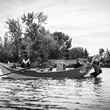










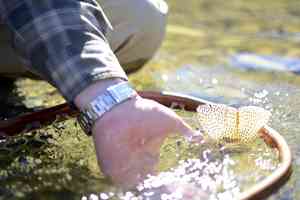
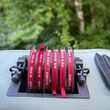

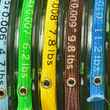


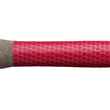
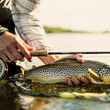
Comments